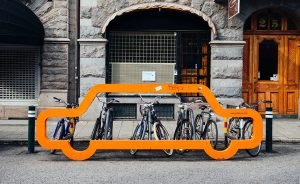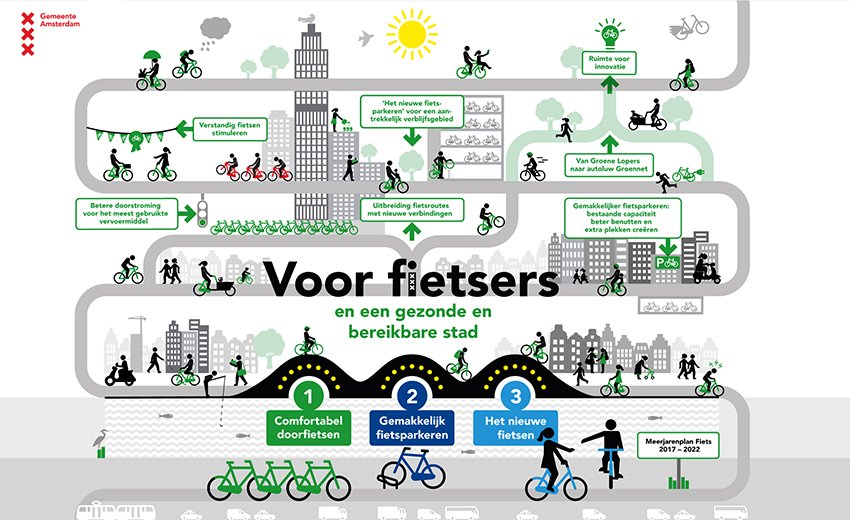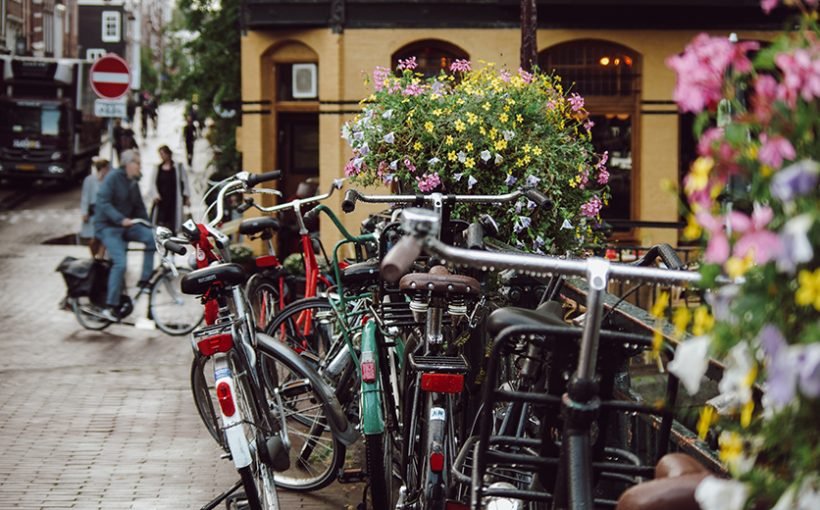Nowadays, many large cities have included bicycles in their urban development to promote a healthier and more economical life. Here are some notable initiatives to adapt the city to the benefit of two-wheelers.
- In Copenhagen, where 62% of the inhabitants bike to work, four bridges reserved for cyclists have been built, and more are planned.

Amsterdam © Vince Veras
- Amsterdam is widening existing cycle lanes, increasing the number of low-speed cycle streets and redeveloping major intersections to ensure cyclist safety. The city even has a five-year cycling plan.
- Utrecht: In 2017, the city inaugurated the largest bicycle parking area in the world. The 22,000 spaces are located near the railway stations to allow multimodal travel. A digital system allows users to find their parking lot, while the parking lot also offers a service station for bicycles.
- In Berlin, a “cycle superhighway” plan is being implemented to promote the bicycle as an efficient and rapid means of transport.
- The City of Strasbourg wants to create a centralised urban cycling network by developing the existing transport network and the “Vélostras” cycle highways, i.e. 130km of wide and lighted cycle lanes.

Malmö © Susan-q-yin
- The Swedish city of Malmö already has more than 500 cycle paths. It has just installed sensors at certain intersections to alert motorists of approaching cyclists.
- Luxembourg is planning the installation of a transnational network of cycle paths, facilitating sustainable mobility for cross-border workers living in the Moselle and coming to work in the Grand Duchy.
- To achieve a 100% cycling city, the City of Paris plans to commit 250 million euros to build 180km of additional cycle lanes by 2026. This development will go hand in hand with the development of two-way cycling, a bicycle license intended for primary schools, and bicycle schools for adults.
- In London, the flagship measure of installing an ultra-low CO2 emission zone in the historic centre has gone hand in hand with the introduction of new cycle paths.
- Finally, an amusing initiative from the city of Helsinki: cyclists can now earn a little money if they report and photograph the deterioration of the public road to the municipality.

The City of Amsterdam has developed a five-year cycling plan © Gemeente Amsterdam
The chicken and the egg
Is it thanks to the increase in cyclists that cities will become cleaner, or on the contrary, because cities will improve their urban infrastructure that cycling will become widespread?
The bicycle is undoubtedly not in itself an aim to change the mobility habits of citizens. On the other hand, the many benefits it brings (trade facilitation, social inclusion, access to employment, health, reduction in atmospheric pollution, etc.) make it an ideal tool for establishing new urban planning policies.
Tags: Amsterdam, Berlin, bicycle, Copenhagen, cycle highways, cycle paths, cyclists, Helsinki, Luxembourg, Malmö, Paris, Strasbourg, urban planning





































